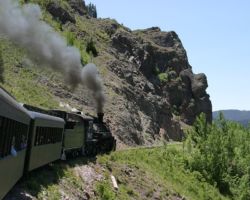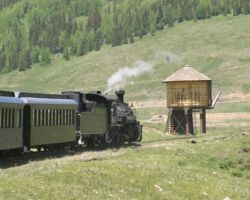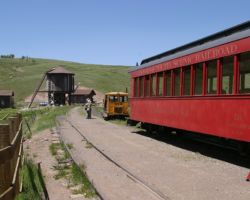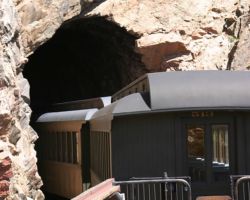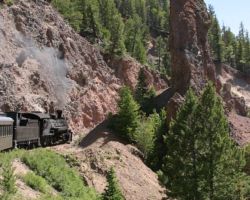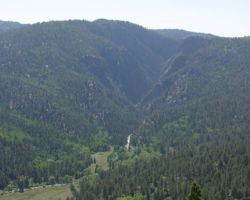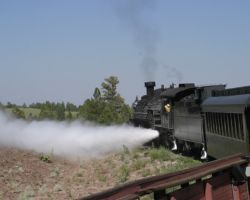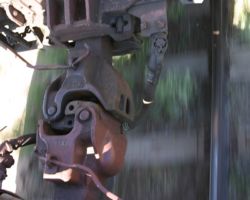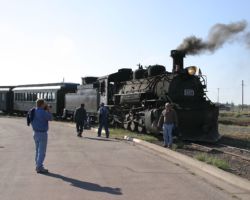Amongst everything that can be said about it, nobody will deny that the Cumbres and Toltec has a remarkable resiliance against adversity. How many other railroads could survive being shut down for a third of their last season, the bankruptcy of their operator, the lack of funding from one of its parent states, and having no locomotives that passed FRA Part 230 as of the close of the last season? Thanks to lots of work from lots of different people and organizations, the 2003 season officially opened on Jun 14, 2003 with a note of cautious optimism that the worst might be behind us. With a million in funding from New Mexico, a new contract for operating the railroad, a million dollar grant for restoring the locomotive fleet, and a packed-full set of trains on its first weekend of operations, things were looking up for the C&TS. I wasn’t able to make it down for opening day due to other commitments, but I did have a Saturday open on the twenty-first. Since I’d railfanned the line four or five times since moving to Colorado but hadn’t ridden it since 1998, I thought it was about time I go for a ride again. Plus, while I was at it, it would be a good excuse to drag my wife along for the weekend.
Actually, I almost didn’t get on the Saturday train. For those that know the infamous C&TS reservation system, this will be just yet another example of why it needs so much help. I made reservations via the website on Tuesday, expecting it to be updated on whether or not the train was full. Besides, those who know me know I’d much rather just deal with machines than have to actually talk to a live service rep. However, the next day, I got an email telling me that the train was full. So I called 1-800-CUMBRES immediately, and asked if they had any parlor car openings instead. I’d already set aside time for the weekend, and I wasn’t going to miss out. Nope, no parlor car seats. On an off chance, I asked them to check on normal coach seats. Well, that wasn’t a problem at all – there were a small number left. The lady on the phone was very helpful – but dang, if you’re going to offer reservations via the website, the systems need to be linked. Not only that, but there needs to be a way of checking train availability without having to give the service rep all of your information first. So, I had a confirmation number for two coach seats, and I felt fairly comfortable that this time I really had them.
Michelle and I left Colorado Springs after work on Friday and headed for Alamosa. Really an uneventful and unremarkable trip, aside from a flat tire and the Days Inn trashing our reservation due to some problem between their personnel and the internet booking system.
Saturday morning dawned clear and beautiful. After grabbing a few shots of new lease units stored in the Alamosa yard for the upcoming San Luis Rio Grande operation, we headed down to Antonito. Upon arriving at the depot, there were two sets of tickets waiting with my name on them – one with two tickets, one with three. The reservation system strikes again! I have no idea where the three came from, but I picked up the two and the staff cancelled the rest – not a problem at all. After walking around the yard and photographing a few things, we finally boarded one of the buses. At 0845h, we off for Chama, tickets in hand.
Once we’d arrived in Chama (about an hour later, 0945h), the train was sitting at the platform awaiting passengers – and the passengers were everywhere but on the train. With no power on the train yet, the passengers (and other fans) were scattered about the yard talking to each other and the many Friends volunteers, as well as looking at all the equipment and of course waiting for 487 to make a move. As for 487, it was still sitting at the enginehouse with a couple of the guys filling her with sand and finishing a few morning maintenance chores. While the schedule gives a 1000h departure time, I’ve found that really doesn’t hold all that well most of the time. A little after 1000h, the crew brought 487 out of the shops, moving a crane/derrick that was in the way. After the crane was tucked away in a siding, 487 pulled back and had her tender filled with coal. Shortly thereafter, it was backed onto the train and we finally got underway.
The trip up the hill was interesting, if uneventful. While 487 had suffered from some slippage and timing issues the previous week, those were all gone. Between just running the rust and weeds off the rails and having the shop crew adjust the timing, 487 and crew provided a nearly flawless performance up the hill. The only minor problem was after a water stop at Cresco when there was a bit of trouble getting started on the grade. Once we reached the summit, we tacked on two more coaches and two open-air cars for the trip on down to Antonito. These cars were stored at the summit, as 5 coaches, 1 snack car, and 1 parlor car tax a K-36 enough coming up the hill. Once the 4% grade is behind the train, they can add these cars in without any problem, since it’s mostly downhill to Antonito.
Lunch in Osier was only a little behind schedule, but definitely well worth the wait. From the last time I was on the train, the food served for lunch is a very significant improvement. The new operation, going by the name Osier Kitchen, offers an all-you-can-eat meal of either roast beef, beef or chicken enchiladas, hamburgers, or hot dogs. All include a decent-sized soup/salad bar included for $8.50 a head. Oh yes, and I forgot the most important part – the incredible desserts. Don’t wait until after you’ve eaten to grab dessert – I personally recommend the fresh chocolate cake. I’m a chocoholic, and this stuff was so rich and the piece so big I almost couldn’t finish the whole thing. For those that just can’t wait, the homemade rum cake and cookies in the snack car are pretty darn good, too.
The only real catch in the whole day came shortly after lunch. Coming out of Mud Tunnel, the crew spotted some obstruction on the track and put the train into emergency. I was moving across the open platform car at the time, and plugging the brakes nearly sent me to the floor. That’s my luck – the minute I’m not holding on to the rail is the moment I need to be. Aside from that minor (and quickly corrected) incident, the rest of the trip into Antonito was as operationally smooth as possible. Obviously on a 120-year-old narrow gauge, the ride isn’t going to be all that smooth, but that’s part of the experience that draws us in.
Arrival in Antonito was around 1745h, about an hour after we were scheduled to arrive. That’s still not bad, and better than many other days last season where I was still waiting for the train well after 1800h. Thankfully, we’d taken the bus over in the morning, so upon arrival all we had to do was get in the truck and head off for the three and a half hours home to Colorado Springs. The photos for the day aren’t spectacular or even anything to particularly write home about, but there’s only so much that can be done from the platform of a moving passenger car on rough rails. However, it does show parts of the railroad you’ll never see except from the train. If you’ve only ‘fanned the route, you definitely are missing a big chunk of the fun. The area between Los Pinos and Hangmans Trestle (the section least accessible by road) is also the most scenic. Enjoy!
I want to note as an afterthought (for anybody out there listening) that the car docent program is really an asset to the railroad. I remember the intercom announcer from years ago, and I also remember wishing the guy had an off switch. Dry, dull, overly repetitive, and boring – the same reason I will often turn off the commentary track when watching a railfan-oriented DVD. Rich Muth, assigned to our car in the morning and the open air car in the afternoon, was a tremendous guide and car host, in terms of wit and knowledge, entertaining those in car 105 all the way up the hill and everybody out in the open during the afternoon. Anybody who can keep the general public interested while not losing the attention of fans like myself has a real talent for the job.
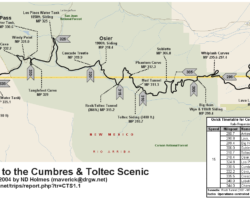
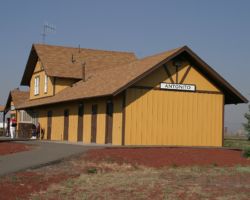
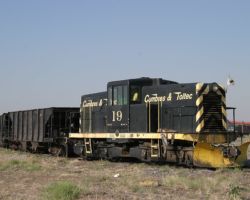
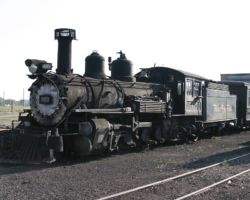
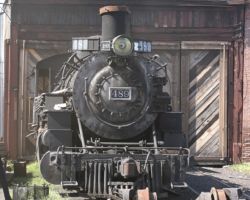
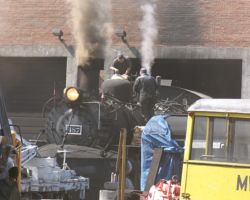
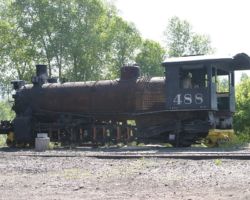
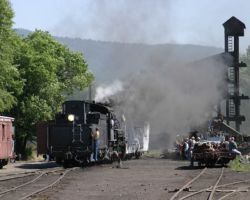
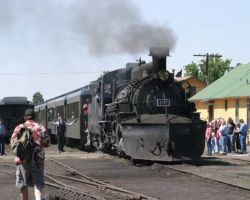
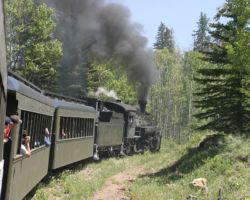
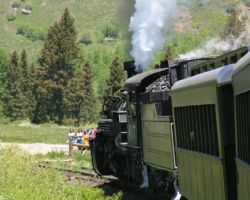
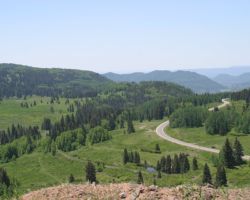
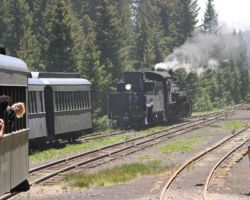
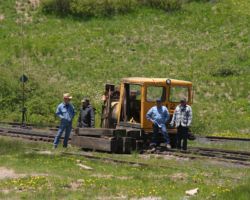
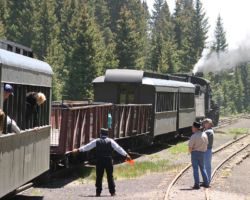
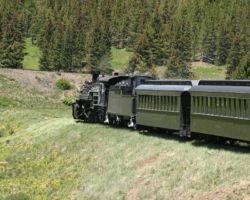
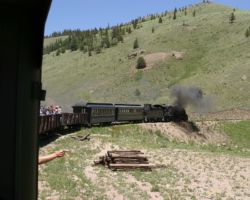
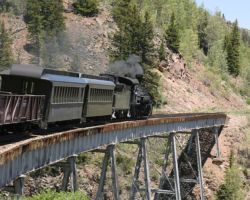
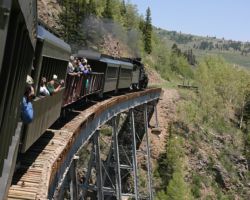
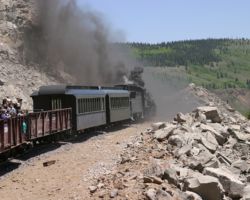
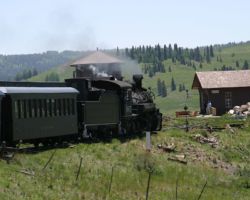
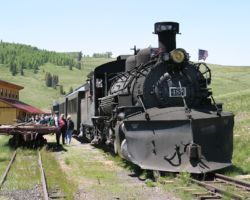
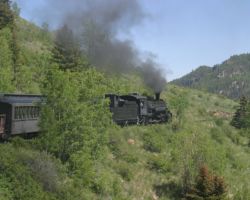
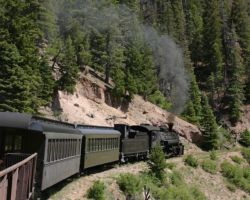
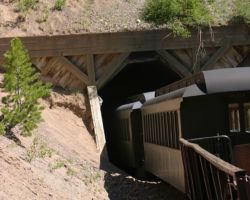
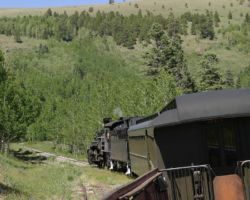
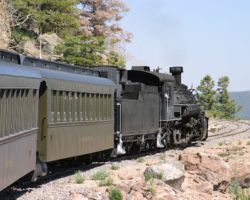
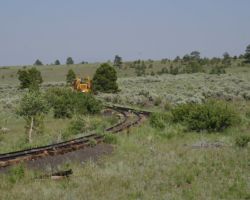
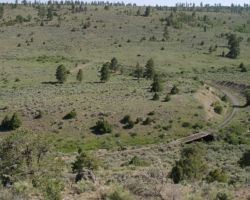
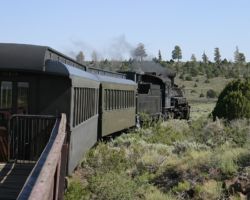
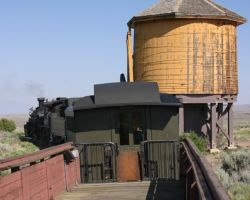
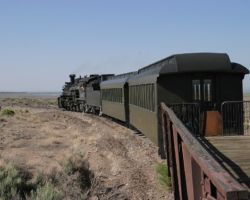
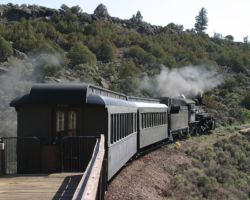
All shots in this trip report were taken with a Canon EOS 10D with a Canon 28-105mm USM or a Canon 75-300mm f4-5.3 IS/USM.
This work is copyright 2024 by Nathan D. Holmes, but all text and images are licensed and reusable under a Creative Commons Attribution-NonCommercial-ShareAlike license. Basically you’re welcome to use any of this as long as it’s not for commercial purposes, you credit me as the source, and you share any derivative works under the same license. I’d encourage others to consider similar licenses for their works.
